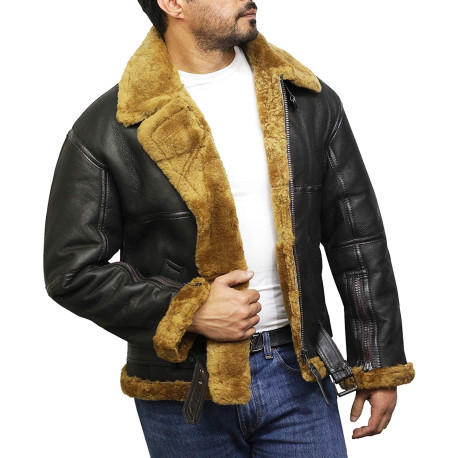The leather bomber jacket is a timeless piece of fashion history that has transcended its military roots to become a staple in contemporary wardrobes. Originally designed for aviators during World War I, the jacket has evolved into a versatile garment embraced by various subcultures, celebrities, and everyday wearers alike. Its unique blend of style, functionality, and durability has ensured its place as one of the most iconic pieces of outerwear in fashion history.

Origins in the Military
The leather bomber jacket was first created to meet the specific needs of military pilots in the early 20th century. The original purpose of the jacket was to provide warmth and protection to aviators flying in open cockpits at high altitudes, where temperatures could plummet. Made from high-quality leather, the jacket’s thick material offered insulation from the cold and wind, while the snug fit allowed pilots to move freely within the confines of their aircraft. Early versions were often paired with sheepskin lining for extra warmth.
The bomber jacket gained its iconic status during World War II when it became the uniform for U.S. Army Air Forces pilots. The distinctive, rugged look of the jacket was quickly associated with bravery and courage, further cementing its role in military culture. Over time, the bomber jacket became a symbol of strength and adventure, admired not only by military personnel but also by civilians.
Fashion Evolution: From Military to Mainstream
As the decades passed, the leather bomber jacket began its journey from the military to mainstream fashion. In the 1950s and 1960s, it was adopted by various subcultures, including motorcycle enthusiasts and rebellious youth. The jacket was seen as a symbol of toughness and individuality, a look that was particularly embraced by the rock and roll scene. Celebrities like Marlon Brando and James Dean popularized the leather jacket through their iconic roles in films such as The Wild One and Rebel Without a Cause. These performances showcased the jacket’s ability to convey a sense of non-conformity, creating a lasting association with counterculture and rebellion.
In the 1980s and 1990s, the bomber jacket further cemented its place in fashion, as it was embraced by various music genres, from punk rock to hip-hop. The jacket became a symbol of urban style, with streetwear brands incorporating it into their collections. It was during this period that the bomber jacket became more than just a piece of outerwear; it became a statement of personal style and identity.
Modern-Day Appeal: Versatility and Timelessness
Today, the leather bomber jacket is considered a wardrobe essential for both men and women. Its classic silhouette and versatility make it suitable for a wide range of occasions, from casual outings to more formal events. The jacket can be worn over a simple T-shirt for a relaxed look or layered with a sweater for additional warmth in colder months. Its adaptability to different styles—whether paired with jeans, skirts, or even dresses—has helped it remain relevant across generations.
Moreover, the leather bomber jacket has continued to evolve with fashion trends. While traditional brown and black leather remain popular, modern iterations feature a range of colors, patterns, and finishes, allowing wearers to express their unique tastes. The bomber jacket’s timeless appeal lies in its ability to combine both form and function, offering both protection from the elements and a distinctive, stylish aesthetic.
Conclusion
The leather bomber jacket’s role in fashion is undeniably significant. From its origins as a military necessity to its status as a symbol of rebellion and its continued presence in modern wardrobes, the bomber jacket has proven itself to be more than just a garment—it’s a cultural icon. Its enduring popularity is a testament to its versatility, durability, and the timeless appeal of classic style. Whether worn by aviators in the skies or by fashion-conscious individuals on the streets, the leather bomber jacket remains an essential piece of outerwear with a rich history and an everlasting presence in the world of fashion.
